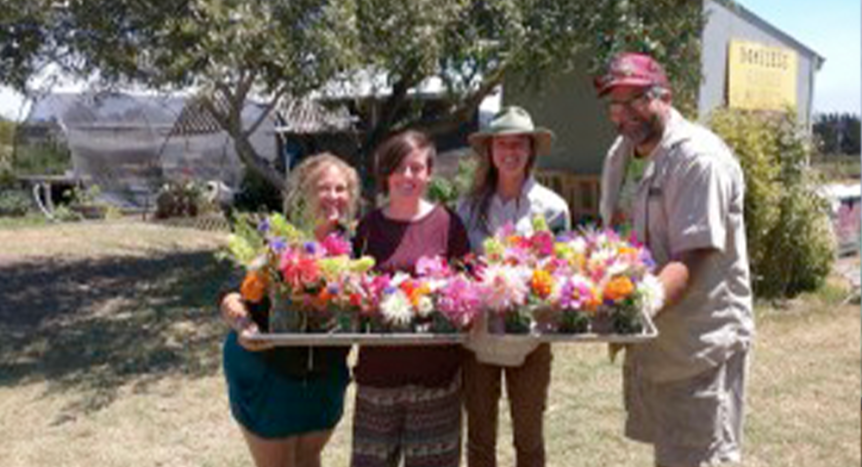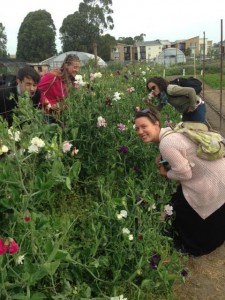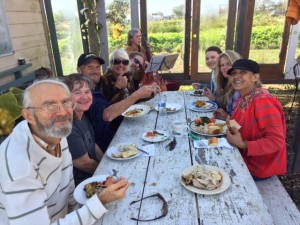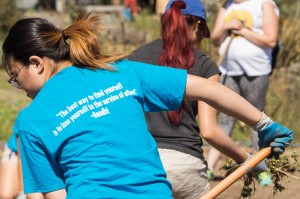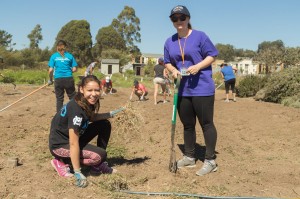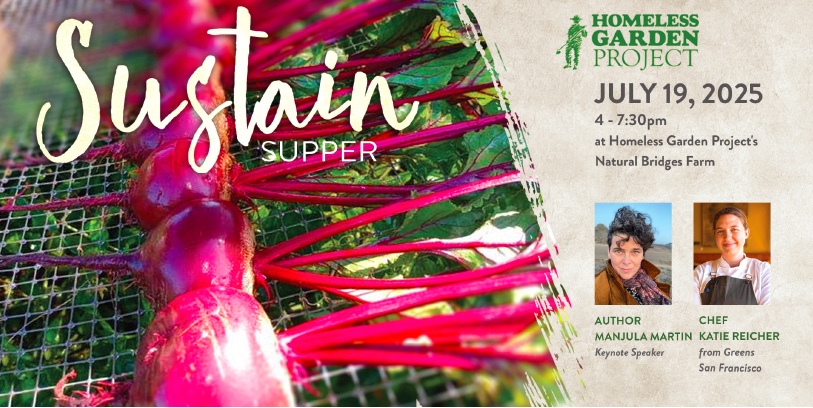One goal of our community education and volunteer programs is to create the Inclusion in our vision statement: We envision a thriving and inclusive community, workforce and local food system.
A recent study performed by UCSC researchers, Heather E. Bullock, Shirley V. Truong, and Lina Chhun was published in the Journal of Poverty. You can read Combatting Social Exclusion: “Safe Space” and the Dynamics of Inclusion at a Homeless Farming Site here. We’re so grateful for our partnership with researchers at UCSC for all they teach us. Below is a very brief summary of and excerpts from their in-depth, peer-reviewed study.
A growing body of research examines how marginalized groups construct “safe spaces.” By providing “breathing room,” these “recuperative spaces” allow marginalized groups to counter dominant stereotypes and “to grow roots, develop, flourish, engage, critique, and just relax with similarly situated others” (Weis & Fine, 2000, p. 1).
Among people who are low income and/or unhoused, class-based stigma and the material deprivation of economic hardship may create unique challenges to the formation of “safe spaces.” Negative stereotypes about poverty limit opportunity and fuel anti-homeless attitudes among the nonpoor; these same stereotypes may also contribute to social distancing among people who are similarly situated, making the formation of social alliances especially challenging among people who are homeless.
Among informants, the farm provided more than economic resources and access to social services; it provided a safe, alternative community that affirmed self-worth and dignity. Descriptions of the farm contrasted sharply with the discrimination and harassment that were daily occurrences in other public spaces.
Ultimately, acceptance and space to be oneself contributed to self-growth, “Everybody was so extremely kind to me … I had the freedom to be who I was, and … that freedom … helped me to grow, and helped me to be who I am, and appreciate who I am” (Dan).
Denise explained it this way, “A lot of friendship … it’s rewarding working here. I go home and I feel good, like, I’ve done something good.”
Previous studies find that “safe spaces” provide a respite from stereo-typing and prejudice (Cooper, 2012; Hall & Fine, 2005; Weis & Fine, 2000) and the farm was no exception, providing a place for personal development as well as positive intra- and inter-class interactions.
Institutional practices helped build these bridges. Communal free hot lunch was served daily for anyone who worked, volunteered, or simply stopped by the farm, creating a space for unstructured socializing.
Moreover, an extensive volunteer program fostered interactions between trainees and people who are housed, including frequent group visits from school children, adults with developmental disabilities, senior citizens, and college student interns. In highly segregated communities, such as the region in which this study was conducted, opportunities for interactions across diverse socioeconomic and racial groups such as this are infrequent. In this respect, the farm stood out.
Volunteers, some who stay with the program long-term, work in partnership with trainees on planting and harvesting and unlike off-farm interactions, trainees, with their greater farming experience, were the “experts” rather than “subordinates.” Bill’s comments capture this dynamic:
Everyone’s always passing through, like all the school field trips … wanting to know this and know that … having people walk through and ask you, “oh, what’s this?” … and actually being able to answer it here and there … makes me feel like, “Oh you probably think I’m bigger up on this chain than I am.”
Such interactions not only undermined classist stereotypes of people who are unhoused as lacking intelligence and competence, they also provided much needed opportunities for positive interclass contact. Shared super-ordinate goals, such as the type of teamwork done at the farm, and equalized status (even if temporarily), are important conditions to improving inter-group relations (Pettigrew, Tropp, Wagner, & Christ, 2011). …the farm served as a potential site for improving anti-homeless attitudes among individuals who are more privileged and housed. For our respondents, these interactions provided a “break” from classist devaluation and a “safe” context in which to interact with people who are housed.
A strong sense of responsibility for each other and shared safety was also essential to making the farm a “safe space.” With hate crimes and other forms of violence against people who are homeless on the rise nationally and strict local ordinances against camping and public sleeping (Bancroft, 2012; NCH, 2014; NLCHP, 2011), respondents were keenly aware of the need to keep each other and the farm “safe.”
–Heather Bullock and Shirley Truong; © 2016 Taylor & Francis, Journal of Poverty

